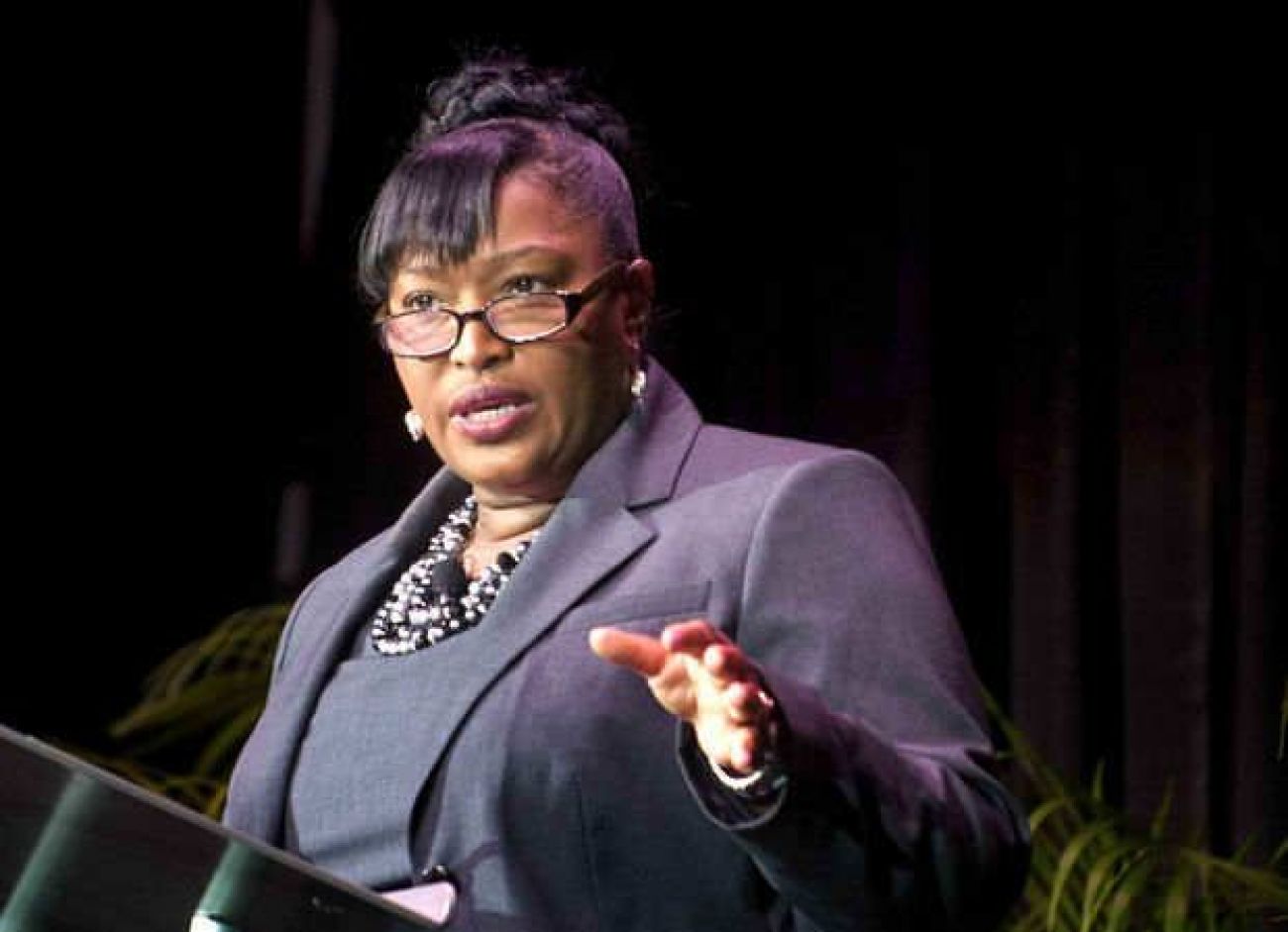With little help from Lansing, schools raise money from local taxpayers


One evening in early May, anxious West Michigan school officials huddled at a Grand Rapids restaurant to await results from an election that easily could have gone wrong.
It was a big ask: Voters across the Kent Intermediate School District – encompassing 20 local districts, including Grand Rapids – were being asked to approve a 0.9-mill property tax hike, to offset years of sagging state aid. The officials that invoked a seldom-used law that allows ISD’s to seek millage votes for schools within their region.
The gathering turned into a celebration.
Nearly 54 percent of voters said “yes,” adding nearly $20 million in annual revenue for 10 years for local school operations – or $211 more a student. The millage increase will cost the owner of a home with a market value of $150,000 about $67.50 a year.
“I was so grateful that taxpayers in Kent County would do that for children,” recalled Grand Rapids Public Schools Superintendent Teresa Weatherall Neal, who attended the watch party. Her district will get $3.5 million more a year, funds she said that will go to reduce class size and improve curriculum.
“You just never know how a vote is going to go.”
That may be. But the results in Kent County – and last year in Wayne County – suggest that more ISD’s will likely seek ballot measures in a state where financial support for education has lagged. With a conservative, budget-conscious Legislature a poor bet to boost K-12 funding any time soon, it might be the best option they’ve got.
How 6 regions raised more money for their students
Six regional school authorities known as ISD’s have won ballot measures to raise taxes for basic local school operations. They say they were forced to ask taxpayers for more money because state school funding has been sluggish. Here is the rise in per pupil funding secured by these ISD’s (sometimes also known as RESA’s) for the school districts they represent:
Muskegon ISD per pupil increase: $161
Kent ISD per pupil increase: $211
Monroe ISD per pupil increase: $253
Kalamazoo RESA per pupil increase: $339
Wayne RESA per pupil increase: $385
Midland ISD per pupil increase: $400
“I can’t imagine that other districts aren’t going to look at the success of Kent County and ask why they aren’t utilizing it themselves,” said Ken Sikkema, senior policy fellow for Lansing-based Public Sector Consultants, a nonpartisan consulting firm. (The Center for Michigan, which includes Bridge Magazine, is a PSC client).
“I think it shows voters are willing to raise taxes to provide what they consider proper funding for local schools.”
Six months earlier, 54 percent of voters in Wayne County, which includes Detroit, approved a 2-mill tax hike to raise $80 million a year for six years for the region’s 33 local school districts - or about $385 a student. While no magic bullet, that’s no small change given that Michigan’s minimum per-pupil grant grew by just $120 from 2016 to 2017.
Just two years before, Wayne County voters had narrowly rejected a similar proposal.
Despite the recent wins, Sikkema cautioned there’s no guarantee future requests will prevail: “The history of success has not been great. There are reasons not a lot of districts have tried this.”

Timing may be everything
Indeed, one only need look to Washtenaw County, which includes Ann Arbor and Ypsilanti, where school officials in 2009 were optimistic voters would back a proposal to add 2 mills for the county’s 10 school districts, to raise $30 million a year.
Polls showed a majority of voters supported more money for schools. But on election day voters turned it down by 57-43 percent.
Voters also soundly rejected a regional education tax in Livingston County in 2005, as well as in 2013 in the Alpena-Montmorency-Alcona Educational Service District in the northeastern Lower Peninsula.
Former state legislator Dan DeGrow recalled the difficult negotiations that led to the 1993 law allowing ISDs to seek tax hikes for school operations. The Michigan Chamber of Commerce opposed the option, he recalled.
“This was the compromise. Frankly, it was meant to be difficult,” said DeGrow, a Republican who served 20 years in the Legislature and is considered an architect of Proposal A. He retired in March as superintendent of the St. Clair County Regional Educational Service Administration.

Restoring local authority
The option for ISDs to seek regional funds grew from recognition that Proposal A had taken away much of local authority to do so – largely by cutting local property taxes for schools in exchange for a statewide sales tax increase from 4 percent to 6 percent that was to fund schools statewide.
Proposal A was boon to many districts – especially with lower property values – in its initial years. But their fund base began to erode as state sales tax collections slowed with Michigan’s decade-long economic slide and as enrollment fell in some districts. The rising cost of teacher retirement expenses made things worse.
Before voters in Wayne and Kent counties approved tax increases in recent months, just four other regions in the state had done so over two decades – in Monroe, Kalamazoo, Midland and Muskegon counties.

In Kalamazoo County, Kalamazoo RESA Superintendent David Campbell said predicting where voters might approve such a tax hike can be akin to rolling dice.
“You never take it for granted. They can be very hard to pass in some areas. We are fortunate in that there is a recognition in Kalamazoo County that we could do better by kids.”
RELATED: Win some, lose some: Getting local voters to pay more for schools
On May 2, voters in the Kalamazoo region approved renewal of its 1.5-mill tax for three years, adding about $339 per student in each of the region’s nine school districts. Districts are free to spend the money as they see fit, with funds going to everything from hiring more teachers, to building repair to the purchase of textbooks or technology equipment.
Campbell said it would have been “devastating” to local districts had it been rejected.
The big squeeze
That was the pitch made in 2009 by Washtenaw County school officials, who said that years of dwindling state support for K-12 schools had forced local districts to cut services and increase class size while they grappled with budget deficits.
Officials in Ann Arbor Public Schools pointed to $16 million in cuts over four years, the elimination of 66 jobs, larger classes and cuts in custodial services. At Willow Run Community Schools, officials faced a $3 million budget deficit while the district closed an elementary school and operated under a state deficit elimination plan.
It was a refrain echoed in districts around the state, as legislators squeezed K-12 funding over a period of years as they scrambled to balance the state budget in a recession. Analysis by the Citizens Research Council found that the true value of Michigan’s per-pupil foundation allowance fell by 27 percent from 2003 to 2013, when accounting for inflation and the rising cost of mandatory contributions by districts for teacher retirement.
A survey of Washtenaw County voters at the time found 54 percent supported the idea of a tax hike to improve schools.
But when the millage came to a vote in November 2009, Ann Arbor was the only municipality in the Washtenaw county ISD to support it. Some outlying communities rejected it three to one.
“It was very disappointing,” recalled William Miller, then-superintendent of the Washtenaw ISD. He is now executive director of the Michigan Association of Intermediate School Administrators.
Miller conceded it was a tall order to ask voters for a tax hike while Michigan was still in the depths of the Great Recession.
“It was a bad time to be asking, looking back on it.”
Kent’s winning strategy
In Kent County, ISD Superintendent Ron Caniff said it was critical in building community support to secure the backing of each local district. All 20 school boards within the ISD voted to support it.
Caniff said he believed the district “could have demonstrated” a need greater than the 0.9 mills it asked for. But this was a new tax, and a conservative county, so a consensus of local superintendents decided to keep it on the modest side.
In Grand Rapids, meanwhile, school officials grappled with fiscal stresses typical in districts across the state. It faced a $7.1 million deficit as it approached the 2016-17 school year. That was on top of an $8 million deficit the previous year.
Over the course of 20 years, officials said, the district had seen 35 schools close and 1,000 jobs eliminated.
Still, the tax measure stirred up opposition from groups like the Kent County Taxpayers Alliance, which put out robocalls saying the new revenue would pay for “exploding” salaries of school superintendents.
But in the end, there were enough voters like Kristen Werner to carry the day. She is a mother with three children in Rockford Public Schools in northern Kent County – who said she needed no convincing to vote for the measure.
“I think the schools have done a very good job trying to trim their budget,” Werner said. “But the state hasn’t increased the amount of money for our schools, so unfortunately we as residents of Kent County have to foot the bill.”
In St. Clair County north of Detroit, one local school official said she was barely aware of this tax option until Kent County voters approved its 0.9-mill tax.
But for the struggling rural district of Memphis Community Schools, southwest of Port Huron, retiring co-superintendent Nancy Thomson said it might be worth considering for the seven districts within St. Clair County.
Thomson said her district of about 960 students has been hit by dwindling state funds and declining enrollment, with the budget squeeze forcing it to defer maintenance on everything from parking lots to gym floors and forego buying needed new school buses.
Thomson said teachers took a 2 percent pay cut in 2012-13 and a freeze in their salary step increases. For several years, the district has not replaced departing teachers, as its staff dropped from 54 teachers to 48. That meant larger class sizes. Its textbooks are 12 years old.
“We have done everything we can to keep cuts as far away from kids as we could,” Thomson said.
Thomson said several other districts within the ISD face similar issues. While Thomson retired at the end of the school year, she hopes other officials pick up the ball.
“It has to start somewhere. I think we at least should look at options that will keep our school strong.”
See what new members are saying about why they donated to Bridge Michigan:
- “In order for this information to be accurate and unbiased it must be underwritten by its readers, not by special interests.” - Larry S.
- “Not many other media sources report on the topics Bridge does.” - Susan B.
- “Your journalism is outstanding and rare these days.” - Mark S.
If you want to ensure the future of nonpartisan, nonprofit Michigan journalism, please become a member today. You, too, will be asked why you donated and maybe we'll feature your quote next time!

